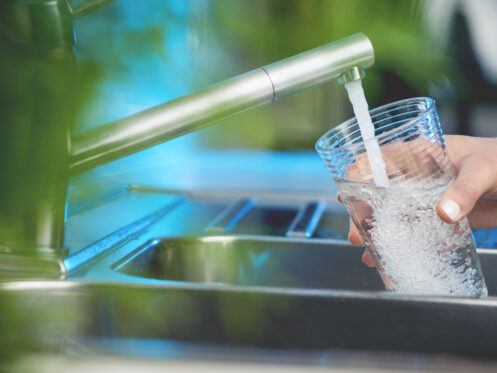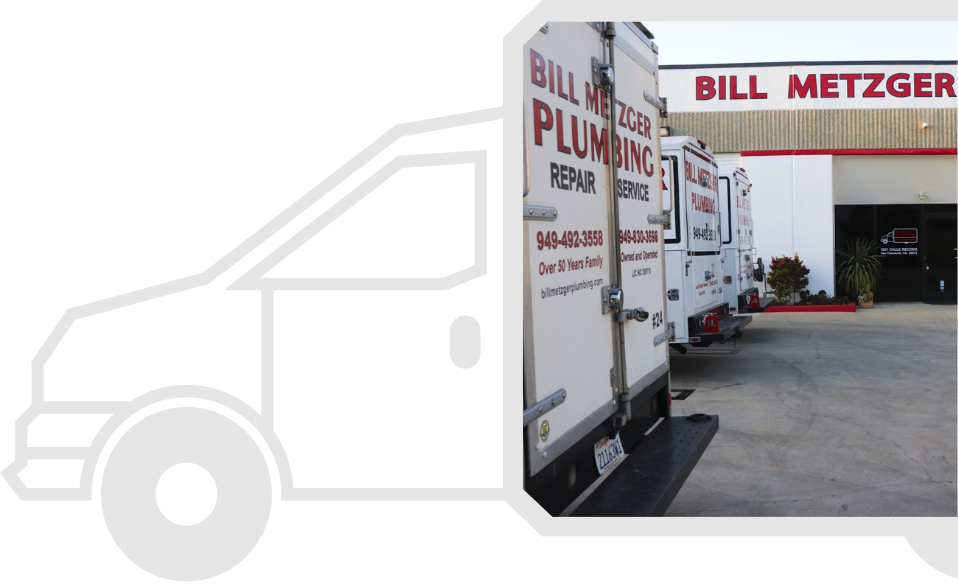Local municipalities treat their water with generous amounts of fluoride, in addition to sanitizing water with things like chlorine, chloramine, and other agents. Unfortunately, these are just a few of the countless water quality concerns affecting San Clemente, CA, and the greater Orange County area. Even if you’re using bottled water or a countertop filter for consumption, you still have to account for the water that you’re bathing in and cooking with. Its many contaminants may be affecting your health.
Water Quality, Water Safety, and Differing Opinions
Orange County water supplies are subjected to multiple water quality tests. These tests measure the safety of water for consumption by quantifying the levels of specific chemicals, pathogens, and other contaminants that are present. Among the most important of these tests is the annual water quality test and report performed by the United States Environmental Protection Agency (EPA). In yearly testing, the EPA consistently deems Orange County drinking water safe for consumption.
What the Environmental Working Group Has to Say
The Environmental Working Group (EWG) is an American non-profit company that advocates for corporate liability. According to the EWG, the standards used by the EPA for water quality tests are more than 20 years old. They don’t account for current water quality concerns, including recent and increasingly pressing concerns about per- and poly-fluoroalkyl substances (PFAS) or “forever chemicals.” The EWG asserts that, in addition to using outdated testing parameters, the EPA also neglects to test for many known carcinogens and other harmful contaminants.
Safe and Healthy Are Not One and the Same
One very important distinction that the EWG makes in its own water quality assessments is the distinction between safe and healthy. The levels of contaminants deemed legal and safe by the EPA are not necessarily healthy for humans or animals, according to the EWG. For instance, there are 12 chemicals in San Clemente tap water with concentrations deemed safe by the EPA but determined unhealthy by the EWG. These include:
- Chloroform
- Bromoform
- Chromium (hexavalent)
- Bromodichloromethane
As per the EWG, there are also several potentially harmful chemicals in San Clemente’s water supply for which the EPA has yet to set legal limits.
Where Does San Clemente’s Water Come From?
The origins of the region’s tap water are cause for concern as well. By population, Orange County is the sixth-largest county in the nation. It’s also incredibly drought-prone. To meet water supply demands, preserve the groundwater basin, and mitigate the challenges of increasingly prolonged drought seasons, Orange County has devised a path to achieving a 100% water recycling rate.
Municipal water recycling essentially takes the water that flows out of toilets, taps, appliances, and shower drains and expedites its return to the local water supply system. This process entails:
- Filtering solid waste
- Micro-filtration to eliminate micro-fine particulates
- UV sanitization
- Reverse osmosis
The resulting water is then percolated through marshy earth and introduced into natural bodies of water, from which Orange County’s tap water is derived. In San Clemente, residents are part of South Orange County and receive much of their water from the Colorado River. The remainder is largely obtained from several bodies of water in Northern California as part of the State Water Project. Some of these sources receive millions of gallons of recycled water each day from water treatment plants within their vicinity.
What Do These Things Mean for Residents
Drinking and bathing in San Clemente tap water means potential exposure to a variety of known carcinogens and other chemical contaminants. Whenever recycled water is used as part of a municipality’s water supply, residents may be exposed to residual chemicals from pharmaceutical products. Whether introduced in marshy areas or as part of the local groundwater basin, this water can also contain trace elements of motor oil and other automotive fluids.
Some of the most common health effects of bathing in and consuming contaminated water include:
- Dry hair, hair thinning, and hair loss
- Recurring skin rashes and general skin irritation
- Respiratory distress during or after showering or bathing
- Hormonal imbalances
Chlorine and chloramine are known to cause respiratory irritation. They’re cited by many researchers for causing adverse effects that exceed the benefits of their sanitizing abilities. Even the addition of fluoride for its purported dental health benefits is contentious. According to the United States National Research Council (NRC), the fluoride used in municipal water treatment can cause changes in both bone and brain density and significant alterations to the brain’s structure, including potential calcification of the pineal gland.
It’s also important to note that many California municipalities are implementing ambitious “flush-to-faucet” plans, and Orange County is leading the way. These plans will further expedite the conversion of wastewater into drinking water by shortening marsh or soil percolation and, in some instances, using stronger sterilizing agents.
Orange County and Hard Water Woes
Hard water has high concentrations of dissolved minerals like calcium and magnesium. Although these are minerals that the body needs, they’re not present in ways that the body can use. They can also lead to hard water buildups at the interior of pipes, fixtures, and faucets, as well as inside costly, water-reliant appliances. Much like many other Southern California counties, Orange County is considered to have moderately hard to hard water. Hard water problems are further complicated by aging pipes in San Clemente homes. This is especially true in those homes that haven’t had their plumbing systems updated in many decades.
Professional Water Quality Testing for Your Home
The quality of water at your taps is affected by the age and integrity of your pipes. This is also true for other building and property-specific factors. Scheduling a home water quality test will tell you whether you have hard water, extremely contaminated water, or both. It will also identify all present contaminants and their concentrations. We use these tests to help our clients decide between whole-house water filters and water softeners. For optimum water quality, many homeowners in the region require each of these two equipment types.
The Benefits of Whole-House Water Filtration
Whole-house water filters attach directly to the main water supply lines. This way, the water that flows out of every tap is treated. This includes the water supply lines leading to in-refrigerator ice makers, dishwashers, washing machines, sinks, showers, outdoor taps, and commodes. Over the long term, purifying water at the main water supply line proves significantly cheaper than using countertop water filters, single-tap filters, or bottled water. It also offers a more all-inclusive solution to homeowners’ water purification needs.
Whole-house water filtration also improves the texture, taste, and clarity of tap water. If your water has a brown, gray, or cloudy appearance or if it consistently looks and tastes “off,†a whole-house water filter may be a wise investment.
Bill Metzger Plumbing is proud to serve residents of San Clemente and the greater Orange County area. We offer exceptional plumbing, drain, water heater, and sewer services. We also provide high-quality, whole-house water filtration systems. To find out more or schedule an appointment, give Bill Metzger Plumbing a call today.



 Today
Today 